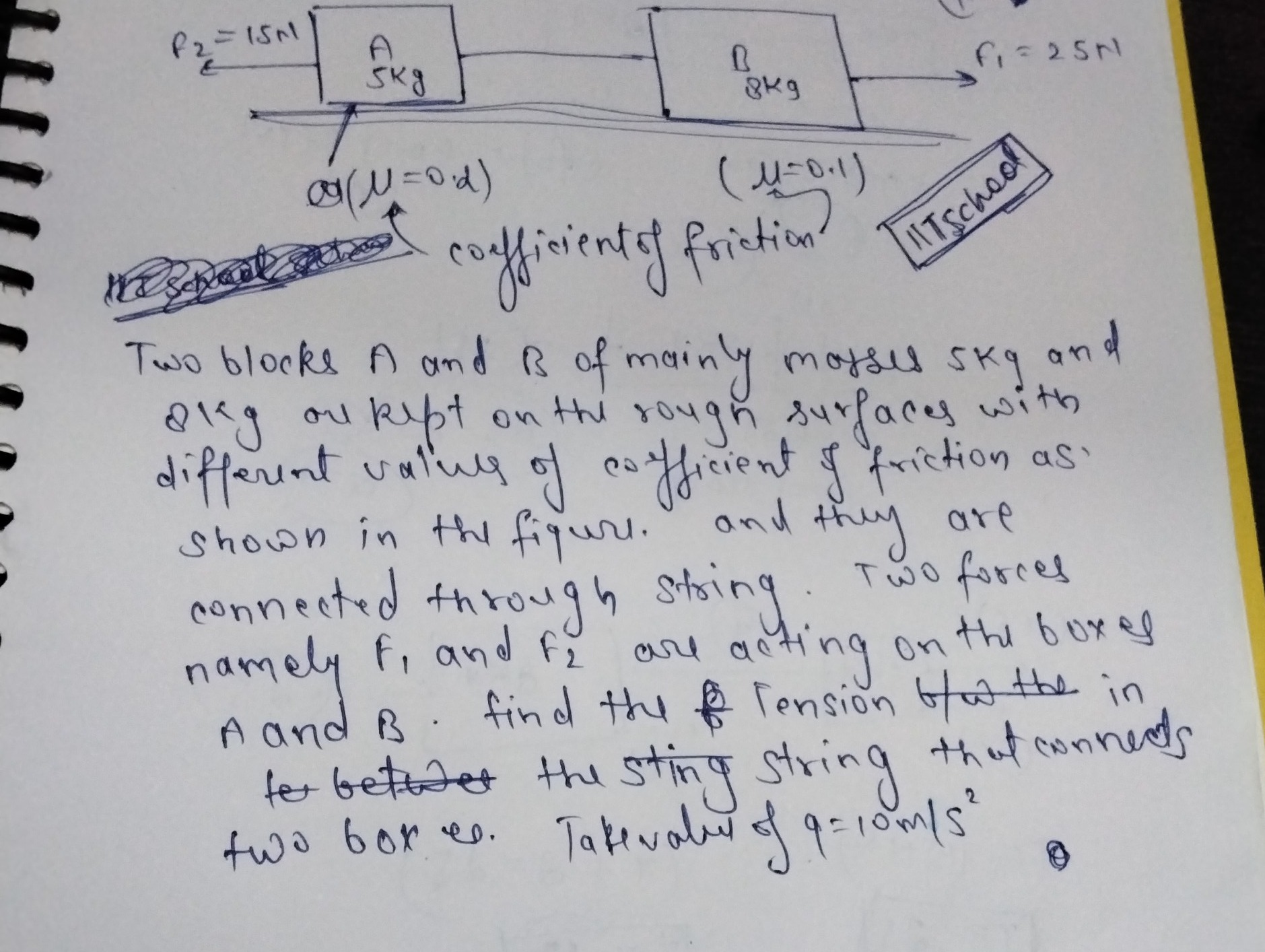Question
Question: Two blocks A and B of mainly masses 5kg and 8kg ou kept on the rough surfaces with different values...
Two blocks A and B of mainly masses 5kg and 8kg ou kept on the rough surfaces with different values of coefficient of friction as shown in the figure. and they are connected through String. Two forces namely F₁ and F₂ are acting on the boxes A and B. find the & Tension of the in for betwer the sting string that connects two box es. Take value of g=10m/s²

20N
Solution
The system consists of two blocks A and B connected by a string, placed on a rough horizontal surface. External forces P2=15 N and F1=25 N are applied to blocks A and B respectively. The masses are mA=5 kg and mB=8 kg. The coefficients of kinetic friction are μA=0.2 and μB=0.1. We take g=10 m/s².
First, let's calculate the maximum static friction for each block. The normal force on each block is equal to its weight since the surface is horizontal. NA=mAg=5×10=50 N. The maximum static friction for block A is fsA,max=μANA=0.2×50=10 N. NB=mBg=8×10=80 N. The maximum static friction for block B is fsB,max=μBNB=0.1×80=8 N.
Let's check if the system moves. Consider the net external force on the system in the horizontal direction. The force F1 acts to the right, and the force P2 acts to the left. The net external force is Fnet=F1−P2=25−15=10 N to the right. The maximum possible static friction opposing motion is the sum of the maximum static frictions for each block: fs,max=fsA,max+fsB,max=10+8=18 N. Since the net external force (10 N) is less than the maximum total static friction (18 N), the system will remain at rest. The acceleration of the system is a=0.
Since the system is at rest, the net force on each block is zero. Let T be the tension in the string.
Let's assume the tension is 20 N. For A: 15−20+fA=0⟹fA=5. ∣fA∣=5≤10. Valid. For B: 25−20+fB=0⟹fB=−5. ∣fB∣=5≤8. Valid. With T=20, fA=5 (right) and fB=5 (left). Check equilibrium of A: 15−20+5=0. Valid. Check equilibrium of B: 25−20−5=0. Valid.
The tension in the string is 20 N.
